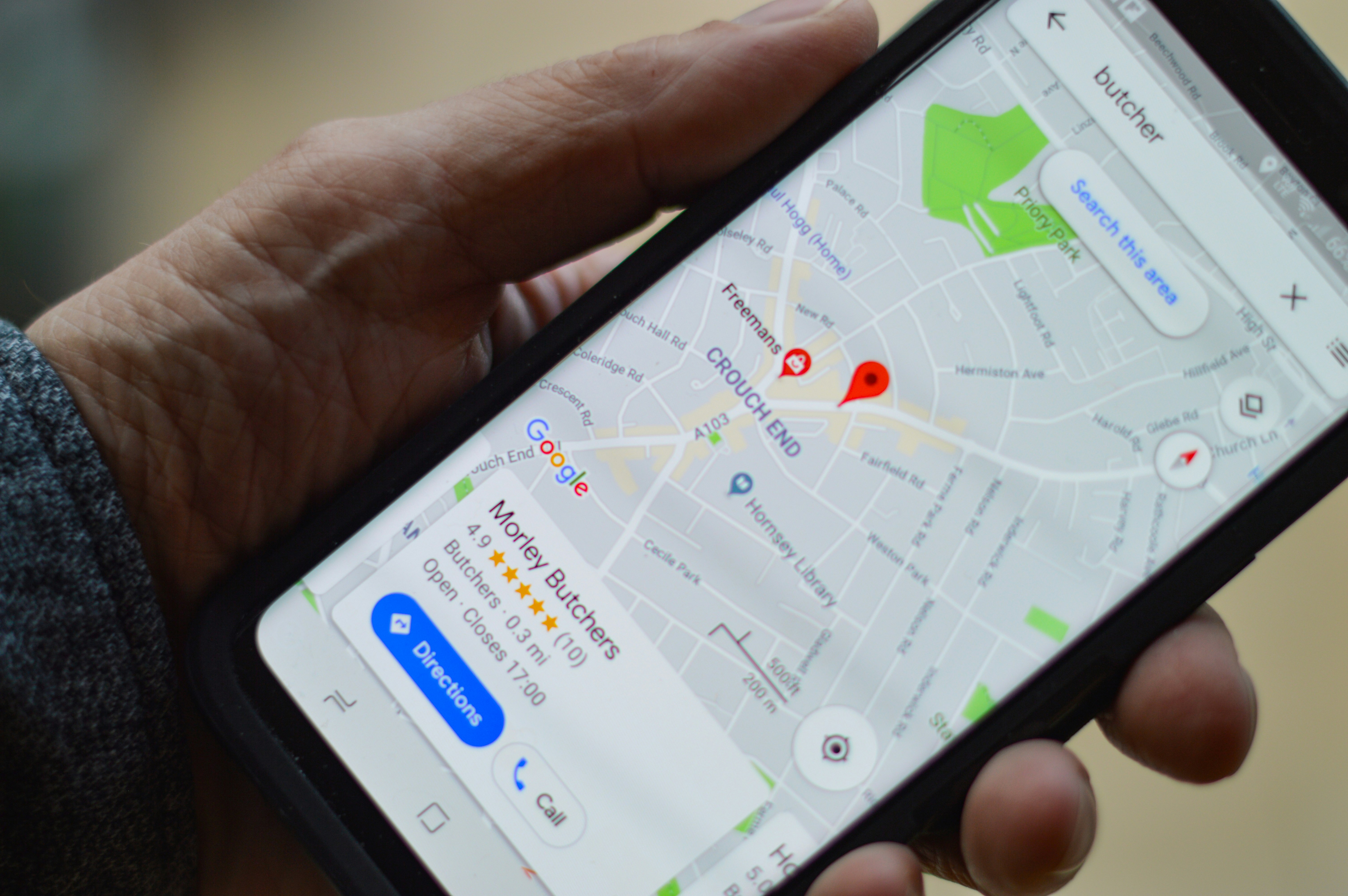

AI Marketing Software & Lead Generation Solutions For Dental Practices
The only 3 things you need to rank #1 on Google. Get more patients and sales with our proven digital marketing services. Local SEO that gets results in 30 days or less!
AI Marketing Software & Lead Generation Solutions For Small Businesses
The only 3 things you need to rank #1 on Google. Get more customers and sales with our proven digital marketing services. Local SEO that gets results in 30 days or less!
Does Your Business Qualify For Fast Revenue Windfalls With A Database Re-Activation?
Multi-Channel Marketing Domination...
Marketing Automation
AI Powered Lead Generation
Multi-Channel Marketing Domination...

Transform your practice, amplify your patient base, and become the go-to dental practice in your area. This isn't just an upgrade; it's a practice-defining evolution.
Take charge of your growth today, dominate your market tomorrow. Ready to elevate your practice? Let's connect!
The Ultimate AI Dental Practice Growth Solution
Revolutionize your dental practice with our cutting-edge AI Dental Data Boost!
Crafted exclusively for ambitious dental practices, this game-changing solution doesn’t just fill your schedule—it transforms your practice into a thriving hub of new patients.
Here's what you'll get every month:
10,000 Targeted Data points: Dive into a vast pool of 10,000 meticulously enriched leads, each segmented by zip code, age, income, and mobile number. These aren't just names; they're detailed profiles tailored to match your ideal patient demographics.
Seamless CRM Integration: Say goodbye to manual data entry. Our advanced CRM system seamlessly integrates with your workflow, automatically loading leads and equipped with AI-powered nurture emails and appointment booking. Your schedule will be filled with qualified leads without lifting a finger.
Effortless Appointment Scheduling: Our AI doesn’t just schedule appointments; it optimizes your calendar based on conversion rates, ensuring your team's time is used efficiently, and every slot is maximized for potential patients.
Professional Call Center Support: To ensure no opportunity is missed, our dedicated call center professionals step in to seal the deal. They enhance lead engagement and ensure that your calendar is booked solid with quality appointments.
The Result? A constant stream of high-quality appointments flooding your calendar, ready to become long-term patients. You're not just growing your practice; you're revolutionizing patient acquisition.
The Ultimate AI Recruitment Accelerator
Unlock the full potential of your recruitment efforts with our exclusive AI Recruitment Accelerator package!
Designed specifically for forward-thinking recruitment firms, this powerhouse solution promises not just to fill your pipeline but to transform it into a dynamic engine of growth.
Here’s what you get every single month:
10,000 Precision-Targeted Data Points: Not just any leads, but 10,000 enriched contacts meticulously curated to connect you with key industry decision-makers. This isn't about quantity alone; it's about premium quality that converts.
Fully Integrated CRM System: We don't just hand over leads; we streamline them directly into a state-of-the-art CRM system. This system isn’t just a database—it’s your automated sales force, equipped with advanced nurture emails and AI-driven appointment scheduling, working tirelessly to warm up your prospects.
Automatic Appointment Setting: Forget the hassle of back-and-forth scheduling. Our AI tools analyze responses and optimize appointment times to fill your calendar efficiently. Each slot is meticulously planned to maximize your team’s productivity and focus on closing deals.
Dedicated Call Center Support: To ensure no opportunity slips through, our professional call center steps in to seal the deal. They’re your closing cavalry, enhancing lead engagement and ensuring your calendar transitions from busy to booming.

Make the switch to smarter recruiting. Transform your approach, multiply your outcomes, and dominate your sector. This isn’t just an upgrade. It’s a revolution.
Act now, dominate tomorrow. Ready to boost your recruitment game? Let’s talk!
The Ultimate AI Insurance Data Machine

Supercharge your insurance sales with our unparalleled AI Insurance Data Machine! Crafted for ambitious insurance agencies aiming to eclipse their competition, this all-in-one solution not just fills your sales funnel—it transforms it into a high-performance conversion machine.
Here's what your agency gains every month::
10,000 High-Quality Data Points: Dive into a pool of 2,000 meticulously enriched leads, each segmented by zip code, age, and income. These aren't random contacts; they're tailored picks designed to match your ideal customer profile, dramatically increasing the chances of conversion.
Fully Automated CRM Integration: Say goodbye to manual data entry. Our sophisticated CRM system automatically absorbs every lead, armed with advanced nurturing emails and an AI-driven appointment setting feature that works round-the-clock to warm up your prospects.
Effortless Appointment Booking: Our AI doesn't just schedule appointments; it optimizes your calendar based on peak conversion times, ensuring that your team's efforts are maximized and no opportunity is missed.
Professional Call Center Backup: To guarantee that every lead is capitalized on, our dedicated call center professionals provide the extra push needed. They enhance engagement and ensure that your calendar transitions from filled to fruitful.
The Outcome? A relentless stream of high-potential appointments flooding your calendar, ready for conversion. You’re not just playing the game; you're outsmarting the field. Transform your sales process, amplify your results, and become a leader in your market. This isn't just an advancement—it’s a complete overhaul of how you engage with potential clients.
Take action today, dominate your market tomorrow. Are you ready to elevate your insurance sales? Let's connect!
The Ultimate AI Recruitment Accelerator

Unlock the full potential of your recruitment efforts with our exclusive AI Recruitment Accelerator package!
Designed specifically for forward-thinking recruitment firms, this powerhouse solution promises not just to fill your pipeline but to transform it into a dynamic engine of growth.
Here’s what you get every single month:
10,000 Precision-Targeted Data Points: Not just any leads, but 1,000 enriched contacts meticulously curated to connect you with key industry decision-makers. This isn't about quantity alone; it's about premium quality that converts.
Fully Integrated CRM System: We don't just hand over leads; we streamline them directly into a state-of-the-art CRM system. This system isn’t just a database—it’s your automated sales force, equipped with advanced nurture emails and AI-driven appointment scheduling, working tirelessly to warm up your prospects.
Automatic Appointment Setting: Forget the hassle of back-and-forth scheduling. Our AI tools analyze responses and optimize appointment times to fill your calendar efficiently. Each slot is meticulously planned to maximize your team’s productivity and focus on closing deals.
Dedicated Call Center Support: To ensure no opportunity slips through, our professional call center steps in to seal the deal. They’re your closing cavalry, enhancing lead engagement and ensuring your calendar transitions from busy to booming.
Make the switch to smarter recruiting. Transform your approach, multiply your outcomes, and dominate your sector. This isn’t just an upgrade. It’s a revolution.
Act now, dominate tomorrow. Ready to boost your recruitment game? Let’s talk!
The Ultimate AI Dental Practice Growth Solution

Transform your practice, amplify your patient base, and become the go-to dental practice in your area. This isn't just an upgrade; it's a practice-defining evolution.
Revolutionize your dental practice with our cutting-edge AI Dental Data Boost!
Crafted exclusively for ambitious dental practices, this game-changing solution doesn’t just fill your schedule—it transforms your practice into a thriving hub of new patients.
Here's what you'll get every month:
10,000 Targeted Data points: Dive into a vast pool of 10,000 meticulously enriched leads, each segmented by zip code, age, income, and mobile number. These aren't just names; they're detailed profiles tailored to match your ideal patient demographics.
Seamless CRM Integration: Say goodbye to manual data entry. Our advanced CRM system seamlessly integrates with your workflow, automatically loading leads and equipped with AI-powered nurture emails and appointment booking. Your schedule will be filled with qualified leads without lifting a finger.
Effortless Appointment Scheduling: Our AI doesn’t just schedule appointments; it optimizes your calendar based on conversion rates, ensuring your team's time is used efficiently, and every slot is maximized for potential patients.
Professional Call Center Support: To ensure no opportunity is missed, our dedicated call center professionals step in to seal the deal. They enhance lead engagement and ensure that your calendar is booked solid with quality appointments.
The Result? A constant stream of high-quality appointments flooding your calendar, ready to become long-term patients. You're not just growing your practice; you're revolutionizing patient acquisition.
Take charge of your growth today, dominate your market tomorrow. Ready to elevate your practice? Let's connect!
Transform Your Business with Smart Marketing Automation Software...
Local SEO Services

Local SEO
Local SEO is different from national SEO because it focuses on your community, in your business catchment where more than 85% of your customers come from and will come from, the very nature of local business marketing is competitive because you and all your competitors are wanting a slice of the same pie, local SEO is how you win…

Google My Business
Google My Business is the most powerful local SEO tool. It’s free, and it’s easy to use. If you have a business with a physical location, this is your chance to get more customers in the door, however, it is competitive and GMB SEO is needed to get in the 3-pack and stay there and that is where we come in, show up in near me search and do business…

Google Local Services Ads
Are you a local business owner looking to dominate your local community with your services? Look no further than Google Local Services Ads! By using Google Local Services Ads, you can reach potential customers in your area who are actively searching for the services you offer. These ads appear at the top of Google search results, making them highly visible and effective.

3 Click Facebook Ads
New marketing automation software that helps businesses create Facebook ad campaigns with ease. With UpHex, creating ad campaigns has been simplified into a three-step process that anyone can complete. The platform allows users to create high-converting Facebook ads quickly and easily, using templates and automation tools.
Hear From Our Customers...
Alexis Williams
Dr CL Steyn - Orthopedic Surgeon
Elana Swart-Traut - Director Riverside College
Brandon Boyd
Pamela Runge - P2P Dental Connect
Riaan Willemse - Chris Willemse Painters
Terrys Tarot Readings
FAQ's
What is SEO?
SEO, or Search Engine Optimization, refers to the process of optimizing a website to improve its visibility in search engine results pages (SERPs). The goal is to increase organic (non-paid) traffic by enhancing the site's relevance and authority for specific keywords or phrases related to the content or services offered.

Why is SEO important?
SEO is crucial because it makes your website more visible to potential customers, leading to more traffic and opportunities to convert prospects into customers. It's a fundamental part of digital marketing because people conduct trillions of searches every year, often with commercial intent.

How does Google rank websites?
Google uses a complex algorithm that takes into account over 200 factors to rank websites. These factors include user experience, site speed, content quality, keyword relevance, mobile-friendliness, and inbound links, among others. The exact algorithm is a closely guarded secret and is constantly evolving.

What are keywords, and why are they important?
Keywords are words or phrases that users enter into search engines to find information. They are important because optimizing your website with relevant keywords helps search engines understand what your site is about, allowing it to show your site to the right audience.

What's the difference between on-page and off-page SEO?
On-page SEO refers to optimizations you can apply on your website, such as content quality and keyword optimization, meta tags, and site architecture. Off-page SEO involves external factors that influence your site's ranking but aren't directly on your site, like backlinks, social media presence, and other promotional activities outside your website.

How long does it take to see results from SEO?
The timeframe to see results from SEO can vary greatly depending on numerous factors, such as the website's current state, competition in your industry, and the strategies implemented. Generally, noticeable improvements can be seen within 3 to 6 months, but SEO is an ongoing process that requires continuous effort for sustained success.

Are backlinks still important for SEO?
Yes, backlinks are still a critical factor in SEO. They act as a vote of confidence from one site to another, signaling to search engines that others vouch for your content. However, quality over quantity is crucial; a few high-quality backlinks from reputable sites are far more valuable than many low-quality links.

Can I do SEO on my own?
Yes, it's possible to do SEO on your own, especially with the wealth of resources and tools available online. However, SEO can be complex and time-consuming. Depending on your skill level and the competitiveness of your industry, you might benefit from hiring a professional or agency to manage your SEO efforts.

How do I choose the right keywords?
Choosing the right keywords involves researching to understand what terms your target audience is using to find products or services like yours. Tools like Google Keyword Planner and SEMrush can help identify relevant keywords, their search volume, and competition level. Focus on a mix of broad and long-tail keywords that accurately represent your content.

How has SEO changed over the years?
SEO has evolved significantly from simply stuffing pages with keywords to a more sophisticated approach that prioritizes user experience, content quality, and relevance. Search engines have become better at understanding user intent, promoting websites that provide value to users. As a result, modern SEO strategies focus more on creating high-quality content, optimizing for mobile users, and ensuring fast page loading times.

Why do you call your SEO service "Trust Based Ranking"?
"Trust Based Ranking" simply refers to doing SEO the right way or "white hat" as some might refer to it, we've been doing SEO and ranking since 2008 and through the years we've seen instant "black hat" methods crash and burn and Google rewarding and ranking websites sticking to the guidelines and delivering valuable content and service to their community, simply put it pays to gain Google's trust because your business will benefit from profitable search rankings.

From Our Blog

Revolutionize Your Dental Marketing with Google's 7-11-4 Rule | Avoid 7 Critical Mistakes
7 Critical Marketing Mistakes Dental Practices Make and How to Fix Them Using Google's 7-11-4 Rule
I. Introduction
In today's competitive healthcare landscape, effective marketing has become indispensable for dental practices aiming to thrive and grow. As patients increasingly turn to digital platforms to research and choose their dental care providers, having a robust and strategic marketing approach is no longer optional—it's a necessity.
However, many dental practices find themselves navigating this complex marketing terrain with limited guidance, often falling into common pitfalls that can hinder their growth and success.
From underestimating the time required to build patient trust to neglecting the diverse channels through which potential patients engage with their brand, these mistakes can cost practices valuable opportunities to connect with their target audience and establish themselves as leaders in their field.
Enter Google's 7-11-4 rule—a powerful framework that can revolutionize how dental practices approach their marketing strategies.
This rule, derived from extensive research on consumer behavior and decision-making processes, provides a blueprint for creating comprehensive, multi-touch marketing campaigns that effectively guide potential patients from initial awareness to the point of choosing your practice for their dental care needs.
The 7-11-4 rule states that before making a purchase decision (or in this case, choosing a dental practice):
Consumers need 7 hours of engagement with your brand
They require 11 touch points of engagement
They seek information from 4 separate locations of contact
For dental practices, this means creating a marketing strategy that:
Provides ample content and opportunities for potential patients to spend significant time engaging with your brand
Offers multiple, varied interactions across different platforms and mediums
Ensures your practice is present and accessible in various locations, both online and offline
By understanding and implementing this rule, dental practices can create more effective, patient-centered marketing campaigns that:
Build trust and credibility over time
Provide comprehensive information to address all patient concerns
Meet potential patients where they are, across multiple platforms and touchpoints
Guide patients naturally through their decision-making journey
In this comprehensive guide, we'll explore the seven most critical marketing mistakes that dental practices make and show you how to address them using the insights provided by the 7-11-4 rule.
Whether you're just starting to develop your dental practices' marketing strategy or looking to refine your existing efforts, this article will provide you with actionable insights and practical tips to take your marketing to the next level.
Let's dive in and discover how you can transform your dental practices' marketing approach with the power of Google's 7-11-4 rule, avoiding common pitfalls and paving the way for sustainable growth and success.
Key Takeaways:
The 7-11-4 Rule: This marketing principle, based on Google's research, suggests that before making a decision, consumers need:
7 hours of engagement with your brand
11 touch points of engagement
Information from 4 separate locations of contact
Common Marketing Mistakes: The article identifies seven critical errors dental practices often make, including insufficient brand engagement time, lack of diverse touch points, limited contact locations, inconsistent branding, ignoring the patient journey, lack of content strategy, and ineffective use of digital marketing channels.
Content Strategy: Developing valuable, educational content is crucial for achieving the 7 hours of engagement. This can include blog posts, videos, podcasts, and interactive tools.
Multiple Touch Points: Creating varied interactions across different platforms (e.g., website, social media, email, in-office visits) helps guide patients through their decision-making journey.
Diverse Contact Locations: Ensuring your practice is accessible across at least four different contact points (e.g., website, social media, Google My Business, physical office) improves visibility and patient convenience.
Patient Journey Focus: Applying the 7-11-4 rule throughout the entire patient lifecycle, from awareness to advocacy, helps in nurturing long-term relationships.
Consistent Branding: Maintaining consistent messaging and visual identity across all touchpoints and contact locations builds trust and recognition.
Digital Marketing Optimization: Leveraging various digital channels effectively, in line with the 7-11-4 rule, maximizes engagement and conversions.
Measurement and Adaptation: Regularly tracking key performance indicators and making data-driven adjustments is crucial for the successful implementation of the 7-11-4 rule.
Long-term Commitment: Effective marketing using the 7-11-4 rule is an ongoing process that requires consistency, patience, and continuous refinement.
By understanding and implementing these key points, dental practices can create a more comprehensive, patient-centered marketing strategy that effectively attracts and retains patients in today's competitive landscape.
II. Understanding Google's 7-11-4 Rule
Google's 7-11-4 rule is a powerful principle derived from extensive research on consumer behavior and decision-making processes. To fully harness its potential for your dental practice marketing, it's crucial to understand what this rule entails and how it applies to your digital marketing efforts.
A. Explanation of the Rule
The 7-11-4 rule breaks down as follows:
7 Hours of Engagement: Before making a decision, consumers need approximately 7 hours of engagement with your brand. This doesn't mean 7 continuous hours, but rather a cumulative amount of time spent interacting with your content, website, social media, and other marketing materials.
11 Touch Points: Potential patients typically require 11 different points of contact or interactions with your brand before they feel ready to make a decision. These touch points can include various forms of content and interactions across different platforms.
4 Separate Locations: Consumers tend to seek information from at least 4 different locations or sources before making their decision. This highlights the importance of having a presence across multiple channels and platforms.
This rule underscores the importance of creating a comprehensive, multi-channel marketing strategy that provides ample opportunities for engagement over time.
B. How it Applies to Dental Practice Marketing
For dental practices, the 7-11-4 rule has significant implications across various marketing channels:
Website and Content Marketing:
Create in-depth, valuable content that encourages longer engagement times.
Develop a content strategy that covers a wide range of dental topics to hit multiple touch points.
Ensure your website is informative, easy to navigate, and encourages exploration.
Social Media:
Use multiple platforms to increase your locations of contact.
Create varied content types (posts, stories, videos) to provide different touch points.
Engage with followers to increase time spent with your brand.
Email Marketing:
Develop nurture campaigns that provide valuable information over time.
Use segmentation to create more relevant, engaging emails.
Video Content:
Create educational videos, virtual tours, and patient testimonials to increase engagement time.
Distribute videos across multiple platforms (website, YouTube, social media) to increase locations.
Local SEO and Google My Business:
Optimize your GMB listing as one of your key locations.
Encourage and respond to reviews to create additional touch points.
Community Involvement and Events:
Participate in local events or host your own to create in-person touch points and engagement.
Patient Education Materials:
Develop brochures, infographics, and other materials that patients can engage with in your office and online.
C. Benefits of Implementing this Rule in Marketing Strategies
By aligning your dental practices' marketing with the 7-11-4 rule, you can:
Build Trust: By providing multiple engagements over time, you build credibility and trust with potential patients.
Increase Brand Awareness: Presence across multiple locations and touch points increases overall brand visibility and recall.
Improve Patient Education: The extended engagement time allows for more comprehensive patient education, leading to better informed and prepared patients.
Enhance Patient Experience: By understanding the patient's decision-making journey, you can create a smoother, more supportive experience from first contact to appointment booking.
Optimize Marketing ROI: By focusing on creating multiple meaningful engagements, you can make more efficient use of your marketing budget.
Stand Out from Competitors: A comprehensive strategy aligned with the 7-11-4 rule can differentiate your practice from others that may have a more limited presence.
Foster Long-term Relationships: The emphasis on extended engagement sets the foundation for long-term patient relationships, not just one-time visits.
Understanding and implementing the 7-11-4 rule across your dental practice's marketing efforts can significantly enhance your ability to attract, engage, and retain patients in today's complex digital landscape. In the following sections, we'll explore how this rule can help you address common marketing mistakes and elevate your overall strategy.
III. Common Marketing Mistake #1: Insufficient Brand Engagement Time
One of the most critical errors dental practices make is underestimating the amount of time potential patients need to engage with their brand before making a decision. The 7-11-4 rule suggests that consumers require approximately 7 hours of engagement with a brand before they're ready to make a purchase decision. For dental practices, this translates to creating enough valuable content and interactions to keep potential patients engaged over time.
A. The Importance of Creating Substantial, Engaging Content
Trust Building: Extended engagement allows patients to develop trust in your expertise and approach.
Comprehensive Understanding: More time spent with your content enables patients to fully understand your services and their benefits.
Emotional Connection: Longer engagement fosters a stronger emotional connection with your brand.
Differentiation: Providing in-depth, valuable content sets you apart from competitors with superficial marketing.
Informed Decision-Making: Well-informed patients are more likely to choose your practice and be satisfied with their decision.
B. How to Create 7 Hours Worth of Engaging Content for Potential Patients
Develop a Content-Rich Website:
Create detailed service pages explaining procedures, benefits, and what to expect.
Maintain a regularly updated blog with in-depth articles on dental health topics.
Include FAQs and patient education resources.
Leverage Video Content:
Produce a series of educational videos on various dental topics.
Create virtual office tours and staff introduction videos.
Share patient testimonial videos.
Offer Interactive Tools:
Develop online quizzes about dental health.
Create a virtual smile design tool.
Provide a cost calculator for common procedures.
Host Webinars and Live Q&A Sessions:
Conduct monthly webinars on different dental health topics.
Host live social media Q&A sessions with your dentists.
Create Downloadable Resources:
Develop e-books on comprehensive dental care.
Offer printable care guides for post-procedure recovery.
Create infographics explaining complex dental concepts.
Implement Email Nurture Campaigns:
Design a series of educational emails for new subscribers.
Create segmented email campaigns for different patient needs.
Utilize Podcasts or Audio Content:
Start a dental health podcast discussing various topics.
Offer audio versions of your blog posts for on-the-go consumption.
Develop a Mobile App:
Create an app with dental care tips, appointment reminders, and educational content.
Use Social Media Strategically:
Share daily tips, facts, and engaging questions.
Create story series explaining dental procedures or sharing patient journeys.
Offer Virtual Consultations:
Provide free initial consultations to discuss patient concerns and treatment options.
C. Case Study: Improved Results After Increasing Engagement Time
Let's consider the case of Bright Smile Dental, a mid-sized practice in a competitive urban market:
Before: Bright Smile Dental had a basic website with minimal content and sporadic social media posts. Their average patient engagement time before booking an appointment was estimated at just 2 hours.
After: Following a content audit, Bright Smile Dental implemented a comprehensive content strategy aimed at increasing engagement time:
They revamped their website, adding in-depth service pages, a blog with weekly posts, and a resource center with downloadable guides.
They started a YouTube channel with weekly educational videos and patient testimonials.
They launched a dental health podcast, releasing episodes bi-weekly.
They implemented an email nurture campaign for new leads, providing valuable content over several weeks.
They increased their social media activity, sharing daily posts and hosting monthly live Q&A sessions.
Results: Within six months, Bright Smile Dental saw:
Average engagement time increased to 6.5 hours before booking an appointment.
Website traffic increased by 150%.
Social media following grew by 200%.
Email open rates improved from 22% to 35%.
New patient acquisitions rose by 40%.
Patient satisfaction scores improved, with patients reporting feeling more informed and confident in their choice.
This case study demonstrates that when dental practices focus on creating substantial, engaging content aligned with the 7-hour engagement principle of the 7-11-4 rule, they can significantly improve patient acquisition and satisfaction.
By addressing the mistake of insufficient brand engagement time and instead creating a wealth of valuable content, dental practices can build stronger relationships with potential patients, establish themselves as trusted authorities, and ultimately grow their practice in a competitive marketplace.
IV. Common Marketing Mistake #2: Lack of Diverse Touch Points
Many dental practices fall into the trap of relying on too few types of interactions with potential patients. The 7-11-4 rule suggests that consumers typically require 11 touch points of engagement before making a decision. For dental practices, this means creating a variety of meaningful interactions across different platforms and mediums to effectively guide patients through their decision-making journey.
A. The Pitfalls of Relying on Too Few Types of Interactions
Limited Reach: Using only a few channels limits your ability to reach potential patients where they are.
Repetitive Messaging: Lack of diversity can lead to repetitive content that fails to engage or inform.
Missed Opportunities: Different touch points can address various aspects of patient concerns and needs.
Reduced Memorability: Varied interactions create more memorable experiences with your brand.
Inability to Cater to Different Preferences: Patients have diverse preferences for consuming information and interacting with brands.
B. Strategies for Creating 11 Meaningful Touch Points with Potential Patients
Website Interaction:
Informative service pages
Blog posts on dental health topics
Interactive tools (e.g., appointment schedulers, cost calculators)
Social Media Engagement:
Regular posts on platforms like Facebook, Instagram, and Twitter
Responding to comments and messages
Social media contests or challenges
Email Marketing:
Welcome email series for new subscribers
Monthly newsletters with dental tips and practice updates
Personalized appointment reminders
Video Content:
Educational videos on YouTube
Live Q&A sessions on Facebook or Instagram
Virtual office tours
Patient Reviews and Testimonials:
Encouraging and responding to reviews on Google My Business
Showcasing patient testimonials on your website
Sharing success stories on social media
Local Community Involvement:
Participating in local health fairs or community events
Sponsoring local sports teams or charity events
Offering free dental screenings at schools or community centers
Paid Advertising:
Google Ads for targeting specific dental services
Social media advertising for brand awareness
Retargeting ads to re-engage website visitors
Content Downloads:
Offering e-books or guides on dental health topics
Providing checklists for pre and post-treatment care
Creating infographics on common dental procedures
Mobile App Interaction:
Appointment scheduling and reminders
Dental care tips and personalized treatment plans
Gamification elements for encouraging good oral health habits
Direct Mail:
Sending welcome packages to new patients
Mailing personalized birthday cards or holiday greetings
Distributing flyers about new services or special offers
In-Office Experience:
Providing informative brochures and pamphlets in the waiting area
Displaying educational videos on office TVs
Offering hands-on demonstrations of oral care techniques
C. Examples of Effective Touch Points for Dental Practices
Educational Blog Post: "10 Foods That Naturally Whiten Your Teeth"
Provides valuable information while showcasing your expertise
Can be shared across multiple platforms for extended reach
Instagram Story Series: "A Day in the Life of a Dentist"
Humanizes your practice and builds connection with potential patients
Encourages engagement through questions and polls
Email Campaign: "Your Personalized Oral Health Journey"
Sends tailored tips and recommendations based on patient data
Nurtures leads over time with relevant, valuable content
YouTube Video: "What to Expect During a Root Canal"
Alleviates patient fears by explaining the procedure step-by-step
Can be embedded on your website and shared on social media
Facebook Live Q&A Session: "Ask the Dentist"
Allows real-time interaction with potential patients
Demonstrates your expertise and approachability
Downloadable E-book: "The Complete Guide to a Perfect Smile"
Provides in-depth information on various cosmetic dental procedures
Captures leads and establishes your practice as an authority
In-Office Tablet: Interactive Oral Health Assessment
Engages patients while they wait for their appointment
Provides personalized recommendations based on their responses
Direct Mail Postcard: "Your Smile, Our Priority"
Reaches potential patients in your local area
Includes a special offer for first-time patients
Mobile App Feature: Daily Brushing Reminder and Tracker
Encourages consistent oral care habits
Keeps your practice top-of-mind on a daily basis
Community Event: Free Dental Screening at Local School
Demonstrates your commitment to community health
Creates positive associations with your practice
Patient Review Response: Thoughtful Reply to Google Review
Shows that you value patient feedback
Demonstrates your commitment to patient satisfaction
By implementing a diverse range of touch points like these, dental practices can create a comprehensive marketing strategy that engages potential patients across multiple channels and platforms. This approach not only aligns with the 7-11-4 rule but also ensures that you're meeting patients at various stages of their decision-making journey, ultimately leading to increased trust, brand recognition, and patient acquisition.
V. Common Marketing Mistake #3: Limited Contact Locations
Many dental practices make the mistake of limiting their presence to just one or two contact locations. However, the 7-11-4 rule emphasizes the importance of being present in at least 4 separate locations where potential patients might seek information. This diversity in contact locations ensures that your practice is accessible and visible to patients across various platforms and touchpoints in their decision-making journey.
A. The Importance of Being Present in Multiple Locations (Online and Offline)
Increased Visibility: Being present in multiple locations increases the chances of potential patients finding your practice.
Credibility Building: A presence across various platforms reinforces your practice's legitimacy and professionalism.
Catering to Different Preferences: Different patients prefer different channels for seeking information and making contact.
Competitive Edge: Practices with a diverse presence often stand out from those with limited visibility.
Enhanced Patient Journey: Multiple contact points create a seamless experience for patients as they move through their decision-making process.
B. How to Effectively Utilize 4 Separate Locations for Patient Contact
Website:
Ensure your website is modern, mobile-responsive, and easy to navigate
Include clear contact information, online booking, and a chat feature
Optimize for search engines to improve visibility
Social Media Platforms:
Maintain active profiles on platforms like Facebook, Instagram, and LinkedIn
Regularly post engaging content and respond promptly to messages and comments
Use platform-specific features like Facebook's appointment booking button
Google My Business (GMB) Listing:
Claim and optimize your GMB listing with accurate information
Encourage and respond to patient reviews
Utilize GMB posts to share updates and offers
Physical Office:
Create a welcoming environment with clear signage and branding
Provide informational materials and business cards
Train staff to be knowledgeable brand ambassadors
Online Directories and Review Sites:
Ensure your practice is listed on relevant directories (e.g., Yelp, Healthgrades)
Maintain consistent information across all listings
Monitor and respond to reviews on these platforms
Email:
Develop a robust email marketing strategy
Offer newsletter subscriptions for regular updates
Use email for appointment reminders and follow-ups
Mobile App:
Develop a practice-specific app for appointment booking and patient education
Include features like treatment reminders and oral health tips
Community Presence:
Participate in local events and health fairs
Sponsor local sports teams or charity events
Offer educational sessions at schools or community centers
C. Tips for Optimizing Each Contact Location for Maximum Impact
Website Optimization:
Ensure fast loading times and intuitive navigation
Include clear calls-to-action (CTAs) on every page
Implement SEO best practices to improve search visibility
Add patient testimonials and before/after galleries
Social Media Strategy:
Tailor content to each platform's audience and format
Use high-quality visuals and engaging captions
Implement a consistent posting schedule
Utilize paid advertising for increased reach
Google My Business Optimization:
Keep your information up-to-date, including holiday hours
Add high-quality photos of your office, staff, and services
Respond to all reviews, both positive and negative
Use GMB posts to share timely updates and offers
Physical Office Enhancement:
Create a comfortable, welcoming waiting area
Display educational materials and your practice's accolades
Ensure your branding is consistent with your online presence
Train staff to provide exceptional customer service
Directory and Review Site Management:
Claim all relevant listings and ensure information consistency
Encourage satisfied patients to leave reviews
Respond professionally to all reviews, addressing concerns in negative ones
Use keywords naturally in your listings to improve search visibility
Email Marketing Refinement:
Segment your email list for more targeted communication
Use compelling subject lines to improve open rates
Include valuable content, not just promotional messages
Optimize emails for mobile devices
Mobile App Development:
Ensure the app is user-friendly and provides real value
Include features like push notifications for appointment reminders
Regularly update the app based on user feedback
Promote the app across other marketing channels
Community Engagement Enhancement:
Create branded materials for community events
Offer valuable health information at these events, not just promotional content
Follow up with contacts made at community events
Share your community involvement on other marketing channels
By effectively utilizing these various contact locations, dental practices can create a comprehensive presence that aligns with the 7-11-4 rule. This multi-location strategy ensures that potential patients can easily find and engage with your practice, regardless of their preferred method of contact or stage in the decision-making process. Remember, the key is not just to be present in these locations, but to optimize each one for maximum impact and engagement.
VI. Common Marketing Mistake #4: Inconsistent Branding Across Channels
In the pursuit of creating multiple touch points and being present in various locations, as recommended by the 7-11-4 rule, many dental practices fall into the trap of inconsistent branding. This inconsistency can confuse potential patients and dilute the impact of your marketing efforts across the 7 hours of engagement, 11 touch points, and 4 locations of contact.
A. The Impact of Inconsistent Branding on Patient Trust
Confusion: Inconsistent branding can make it difficult for patients to recognize and remember your practice across different platforms.
Lack of Professionalism: Varying logos, colors, or messaging can give the impression of a disorganized or unprofessional practice.
Reduced Trust: When branding is inconsistent, it can make patients question the reliability and quality of your services.
Weakened Brand Recall: Inconsistency makes it harder for your brand to stick in patients' minds, reducing the effectiveness of your marketing efforts.
Missed Opportunities: Without a cohesive brand, you may fail to convey your unique value proposition effectively across all touch points.
B. Using the 7-11-4 Rule to Create Cohesive Branding Across Platforms
7 Hours of Engagement:
Develop a consistent brand voice and messaging that remains engaging over extended periods.
Create a cohesive visual identity that's recognizable and appealing throughout all long-form content.
Ensure that your brand values and personality shine through consistently in all interactions, whether brief or extended.
11 Touch Points:
Maintain consistent visual branding (logo, color scheme, typography) across all touch points.
Ensure your brand voice and key messages are uniform, whether it's a social media post, email, or blog article.
Develop a set of brand guidelines that can be applied to any new touch points you create.
4 Locations of Contact:
Align the look and feel of your physical office with your online presence.
Ensure consistency in how your brand is presented across your website, social media profiles, directory listings, and any other locations.
Train staff to embody your brand values and messaging in all patient interactions, regardless of the contact point.
C. Examples of Effective Dental Practice Branding
Smile Bright Dental:
Consistent use of a sunshine logo and bright yellow color scheme across all platforms.
Tagline "Illuminating Smiles, Brightening Lives" used consistently in all marketing materials.
Cohesive, friendly tone in all patient communications, reflecting their "bright" branding.
Office decor incorporates the sunny theme, creating a seamless experience from online to in-person interactions.
Green Leaf Dentistry:
Eco-friendly branding with a leaf-shaped tooth logo and green color palette used across all touch points.
Consistent messaging about sustainable practices and natural oral health approaches in all content.
Use of recyclable materials in office and marketing materials, aligning physical experience with brand promise.
Staff uniforms and office decor incorporate the green, natural theme.
Tech Tooth Dental:
Modern, tech-inspired branding with a minimalist tooth-and-circuit logo used consistently.
Uniform use of blue and white color scheme across website, social media, and office design.
Consistent messaging about cutting-edge dental technologies across all platforms.
Integration of high-tech elements in office design and patient experience to match online branding.
D. Steps to Achieve Consistent Branding
Develop Comprehensive Brand Guidelines:
Create a document outlining your logo usage, color palette, typography, imagery style, and brand voice.
Ensure all team members and marketing partners have access to and understand these guidelines.
Audit Your Current Branding:
Review all your marketing materials, online presence, and physical office branding.
Identify any inconsistencies and create a plan to address them.
Update All Touch Points:
Systematically update your website, social media profiles, email templates, print materials, signage, and office decor to align with your brand guidelines.
Train Your Team:
Ensure all staff members understand your brand values and how to represent them in patient interactions.
Provide training on how to maintain brand consistency in various scenarios.
Maintain Consistency in New Content:
Develop a process to review all new marketing materials for brand consistency before publication.
Use templates for common marketing materials to ensure consistency.
Align Online and Offline Experiences:
Ensure that the patient experience in your physical office aligns with the expectations set by your online presence.
Use consistent language, imagery, and messaging across all patient touchpoints.
Regular Brand Reviews:
Conduct periodic reviews of your branding across all channels to ensure ongoing consistency.
Be open to evolving your brand over time, but do so thoughtfully and consistently across all touch points.
By focusing on consistent branding and aligning it with the 7-11-4 rule, dental practices can create a strong, memorable brand identity that resonates with patients across all interactions. This consistency not only helps in attracting new patients but also in building trust and loyalty among existing ones. Remember, your brand is more than just your logo—it's the total experience patients have with your practice across all touchpoints and over time. Making this experience consistent and positive is key to standing out in a crowded dental market and maximizing the impact of your 7 hours of engagement, 11 touch points, and 4 locations of contact.
VII. Common Marketing Mistake #5: Ignoring Patient Journey and Lifecycle
Many dental practices focus their marketing efforts solely on attracting new patients, overlooking the importance of guiding patients through their entire journey and nurturing long-term relationships. The 7-11-4 rule can be effectively applied to create a comprehensive strategy that addresses all stages of the patient lifecycle.
A. The Role of the 7-11-4 Rule in Guiding Patients Through Their Journey
Awareness Stage (Early in the 7 hours of engagement):
Create informative content that introduces your practice and dental health basics.
Use multiple touch points to increase visibility (social media, local SEO, community events).
Ensure consistent branding across all initial contact points.
Consideration Stage (Middle of the 7 hours):
Provide more detailed information about your services and their benefits.
Use various touch points to showcase your expertise (blog posts, videos, webinars).
Maintain consistent messaging across different platforms to build trust.
Decision Stage (Latter part of the 7 hours):
Offer clear, compelling reasons to choose your practice.
Use touch points like testimonials, before/after galleries, and special offers.
Ensure a seamless transition from online research to in-office visit.
Retention and Advocacy Stages (Ongoing engagement):
Continue providing value through various touch points post-treatment.
Use multiple contact locations to stay connected (email, social media, in-office).
Maintain consistent branding to reinforce positive associations with your practice.
B. Strategies for Engaging Patients at Different Stages of Their Lifecycle
Prospective Patients:
Create awareness through targeted ads and informative content.
Offer free resources (e-books, webinars) to capture contact information.
Use retargeting ads to stay top-of-mind during research phase.
New Patients:
Provide a warm welcome through multiple touch points (email series, welcome package).
Offer educational content about what to expect during first visit.
Use post-appointment surveys to gather feedback and improve experience.
Active Patients:
Send regular appointment reminders through preferred contact methods.
Provide personalized oral health tips based on their treatment history.
Offer loyalty programs or referral incentives to encourage ongoing engagement.
Inactive Patients:
Use re-engagement campaigns across multiple touch points.
Offer special "welcome back" promotions.
Provide updates on new services or technologies to spark interest.
Referral Sources:
Regularly engage with referring doctors through professional networks.
Provide easy ways for satisfied patients to leave reviews and refer friends.
Host community events or seminars to build relationships with local businesses.
C. Best Practices for Nurturing Long-term Patient Relationships
Personalized Communication:
Use patient data to tailor communications across all touch points.
Segment your email list to provide relevant content to different patient groups.
Train staff to remember and reference personal details during interactions.
Consistent Value Delivery:
Regularly share useful oral health tips across various platforms.
Offer exclusive content or promotions to long-term patients.
Provide unexpected "surprises" like birthday greetings or anniversary congratulations.
Proactive Care:
Use your patient management system to track treatment histories and send timely reminders.
Offer preventive care tips tailored to each patient's oral health needs.
Reach out between appointments to check on patient progress or concerns.
Feedback Loop:
Regularly seek patient feedback through surveys, reviews, and in-person conversations.
Act on feedback promptly and communicate changes made as a result.
Use positive feedback as content for testimonials (with permission).
Community Building:
Create a patient community through social media groups or events.
Share patient success stories (with permission) to inspire others.
Involve your practice in local community initiatives and invite patients to participate.
Continuous Education:
Provide ongoing education about new treatments or technologies.
Host webinars or in-office seminars on various dental health topics.
Use your expertise to become a trusted source of dental health information.
Loyalty Programs:
Implement a points system for appointments kept, referrals made, or good oral hygiene.
Offer tiered benefits for long-term patients.
Provide family discounts to encourage whole-family engagement.
By applying the 7-11-4 rule throughout the patient journey and lifecycle, dental practices can create a comprehensive marketing strategy that not only attracts new patients but also nurtures long-term relationships. This approach ensures that you're providing value and maintaining engagement across the 7 hours, 11 touch points, and 4 locations of contact, from the first interaction through to long-term patient advocacy.
Remember, it's more cost-effective to retain existing patients than to constantly acquire new ones. By focusing on the entire patient journey and lifecycle, you can increase patient lifetime value, encourage referrals, and build a loyal patient base that contributes to sustainable practice growth.
VIII. Common Marketing Mistake #6: Lack of a Content Strategy
In the digital age, content is king. Many dental practices make the mistake of underestimating the power of a well-planned content strategy. Without a solid content plan, practices miss out on opportunities to educate patients, showcase expertise, and achieve the 7 hours of engagement recommended by the 7-11-4 rule.
A. The Importance of Valuable, Educational Content in Achieving 7 Hours of Engagement
Builds Trust: Informative content positions your practice as a knowledgeable and trustworthy source of dental information.
Improves SEO: Regular, high-quality content helps improve your search engine rankings, increasing visibility.
Increases Engagement: Valuable content encourages patients to spend more time interacting with your brand across multiple touch points.
Educates Patients: Well-crafted content can help patients understand the importance of dental health and various treatments, leading to better-informed decisions.
Differentiates Your Practice: Unique, insightful content sets you apart from competitors and gives patients a reason to choose your practice.
Supports Decision-Making: Comprehensive content can guide patients through their decision-making process, addressing concerns and questions along the way.
B. Applying the 7-11-4 Rule to Content Creation and Distribution
7 Hours of Engagement:
Create in-depth, long-form content like comprehensive guides or video series.
Develop a content ecosystem where pieces link to each other, encouraging further exploration.
Repurpose content across different formats to cater to various learning preferences.
11 Touch Points:
Distribute content across multiple platforms (website, social media, email, etc.).
Create different content types (blog posts, videos, infographics, podcasts) to provide varied touch points.
Use content to encourage interaction (comments, shares, questions) for additional touch points.
4 Locations of Contact:
Ensure your content is accessible across different devices (desktop, mobile, tablet).
Make content available both online and in-office (e.g., digital displays, brochures).
Collaborate with other healthcare providers or community organizations to share content in different locations.
C. Ideas for Dental Practice Content that Engages Potential Patients
Educational Blog Posts:
"The Complete Guide to Dental Implants: What to Expect from Consultation to Recovery"
"10 Foods That Naturally Whiten Your Teeth (And 5 to Avoid)"
"Understanding Gum Disease: Causes, Symptoms, and Treatment Options"
Video Content:
"A Day in the Life of a Dentist" series
Virtual office tours
Animated explanations of common dental procedures
Infographics:
"The Lifecycle of a Tooth: From Baby to Adult"
"The Real Cost of Skipping Your Dental Check-up"
"Brush Up on Your Brushing: Proper Techniques for Optimal Oral Health"
Podcasts or Audio Content:
"Smile Talk: Weekly Dental Health Tips"
Interviews with dental specialists on various topics
Guided relaxation audio for nervous patients
Interactive Tools:
Dental health quiz
Treatment cost calculator
Virtual smile design tool
E-books or Downloadable Guides:
"The Ultimate Guide to Choosing the Right Dentist for Your Family"
"Nutrition for a Healthy Smile: A 30-Day Meal Plan"
"Overcoming Dental Anxiety: Techniques for a Stress-Free Visit"
Email Courses:
"7 Days to a Brighter Smile"
"Understanding Your Child's Dental Development: A Week-by-Week Guide"
Social Media Content:
Daily dental tips
"Ask the Dentist" Q&A sessions
Patient success story spotlights
Webinars or Live Streams:
Monthly dental health topics
Live demonstrations of proper oral care techniques
Q&A sessions with your dental team
D. Implementing an Effective Content Strategy
Define Your Goals: Determine what you want to achieve with your content (e.g., patient education, lead generation, brand awareness).
Know Your Audience: Create patient personas to understand your target audience's needs, preferences, and pain points.
Plan Your Content Calendar: Schedule content creation and publication in advance, aligning with dental health observances and seasonal trends.
Create a Content Mix: Balance different types of content to cater to various preferences and stages of the patient journey.
Optimize for SEO: Research and use relevant keywords in your content to improve search visibility.
Promote Your Content: Share content across your social media channels and consider paid promotion for high-value pieces.
Encourage Engagement: Include calls-to-action in your content to prompt comments, shares, or further exploration of your services.
Measure and Adjust: Use analytics to track content performance and adjust your strategy based on what resonates most with your audience.
Repurpose Content: Turn successful blog posts into videos, infographics, or social media snippets to maximize impact across touch points.
Stay Consistent: Maintain a regular publishing schedule and keep your brand voice consistent across all content.
By developing a robust content strategy aligned with the 7-11-4 rule, dental practices can significantly enhance their online presence, attract more patients, and establish themselves as trusted authorities in dental health. Remember, the key is to create content that provides real value to your patients and potential patients. By educating and engaging your audience across multiple touch points and locations, you not only improve your marketing efforts but also contribute to better overall dental health in your community.
IX. Common Marketing Mistake #7: Ineffective Use of Digital Marketing Channels
In today's digital age, having a strong online presence is crucial for dental practices. However, many practices fall into the trap of ineffectively using digital marketing channels, missing out on the full potential of these platforms to engage patients and grow their business. Let's explore how to optimize these channels in line with the 7-11-4 rule.
A. Common Digital Marketing Pitfalls for Dental Practices
Inconsistent Posting: Irregular or infrequent posts can lead to decreased engagement and follower loss.
Overly Promotional Content: Constantly pushing services without providing value can turn off potential patients.
Ignoring Analytics: Not tracking performance metrics to inform and improve strategy.
Poor Quality Content: Low-quality images or poorly written posts can harm your practice's professional image.
Lack of Audience Targeting: Using a one-size-fits-all approach instead of tailoring content to specific patient segments.
Neglecting Patient Engagement: Failing to respond to comments, messages, or reviews in a timely manner.
Underutilizing Video Content: Not leveraging the power of video for patient education and engagement.
B. How the 7-11-4 Rule Can Improve Digital Marketing Strategies
7 Hours of Engagement:
Create a content mix that encourages prolonged engagement (e.g., blog posts, videos, podcasts).
Develop email nurture campaigns that provide value over time.
Use retargeting ads to re-engage website visitors across multiple platforms.
11 Touch Points:
Utilize multiple digital channels (website, social media, email, ads) to create varied touch points.
Create a consistent posting schedule across all platforms to increase visibility.
Use different content formats (text, image, video, interactive) to cater to various preferences.
4 Locations of Contact:
Ensure your practice is active on at least four key digital platforms (e.g., website, Facebook, Instagram, Google My Business).
Optimize for both desktop and mobile experiences.
Consider developing a mobile app as an additional contact point.
C. Tips for Creating Engaging Online Content for Dental Practices
Educate and Inform:
Create "Dental Health Tip of the Day" posts for social media.
Develop a series of educational videos explaining common dental procedures.
Write in-depth blog posts about oral health topics.
Showcase Your Expertise:
Share case studies or before-and-after photos (with patient consent).
Post "Meet the Team" features highlighting your staff's qualifications.
Create content addressing frequently asked questions about dental treatments.
Humanize Your Practice:
Share behind-the-scenes content of your office and team.
Post about your involvement in community events or charitable activities.
Create personal, relatable content about oral health challenges and solutions.
Leverage User-Generated Content:
Encourage patients to share their smile transformations and tag your practice.
Run contests or challenges that prompt patients to create and share content.
Feature patient testimonials across your digital channels.
Utilize Interactive Content:
Create quizzes about dental health or trivia.
Use polls or questions in social media stories to encourage engagement.
Develop interactive tools like a "Virtual Smile Design" feature on your website.
Optimize for Local SEO:
Create content specific to your local area (e.g., "Best Foods for Dental Health in [Your City]").
Encourage and respond to Google reviews.
Ensure your Google My Business listing is complete and up-to-date.
Leverage Video Content:
Create short, informative videos for social media platforms.
Host live Q&A sessions or webinars on dental health topics.
Develop a YouTube channel with a variety of dental health content.
D. Implementing an Effective Digital Marketing Strategy
Set Clear Objectives: Define what you want to achieve with your digital marketing efforts (e.g., increase website traffic, boost appointment bookings).
Know Your Audience: Develop patient personas to understand their online behaviors and preferences.
Choose the Right Platforms: Focus on platforms where your target audience is most active.
Create a Content Calendar: Plan your content in advance to ensure consistency and variety.
Invest in Quality: Use high-quality images and well-written content to maintain a professional image.
Engage Actively: Respond promptly to comments, messages, and reviews across all platforms.
Use Paid Advertising: Leverage targeted ads on platforms like Google and Facebook to reach potential patients.
Monitor and Analyze: Regularly review your digital marketing performance and adjust your strategy based on insights.
Stay Updated: Keep abreast of new features and trends on digital platforms to stay relevant.
Integrate Online and Offline: Ensure your digital marketing efforts align with and support your offline marketing activities.
By avoiding common pitfalls and implementing these strategies aligned with the 7-11-4 rule, dental practices can significantly enhance their digital marketing presence. Remember, the key to digital marketing success is providing value to your audience while showcasing your practice's personality and expertise. With consistent effort and a strategic approach, digital marketing can become a powerful tool for patient engagement, education, and practice growth.
X. Implementing the 7-11-4 Rule in Your Dental Practice Marketing
The 7-11-4 rule provides a powerful framework for enhancing your dental practice's marketing efforts. This section will guide you through the process of implementing this rule across various aspects of your marketing strategy.
A. Step-by-Step Guide to Auditing Your Current Marketing Efforts
Assess Current Engagement Time:
Review your website analytics to see how long visitors spend engaging with your content.
Analyze email open rates and click-through rates.
Check social media engagement metrics (likes, comments, shares, watch time for videos).
Identify Existing Touch Points:
List all the ways patients currently interact with your practice (website, social media, email, phone, in-office, etc.).
Evaluate the effectiveness of each touch point in providing value and moving patients towards booking an appointment.
Review Contact Locations:
Identify all the places where patients can find information about or contact your practice.
Assess the consistency and quality of information across these locations.
Evaluate Content Quality and Quantity:
Review your existing content across all platforms.
Assess whether your content provides enough value to keep patients engaged for extended periods.
Analyze Patient Journey:
Map out your current patient journey from awareness to advocacy.
Identify gaps where you're not providing enough touch points or engagement opportunities.
B. Creating a Marketing Plan Aligned with the 7-11-4 Rule
Set Clear Objectives:
Define what you want to achieve with your marketing efforts (e.g., increase new patient acquisitions, improve patient retention).
Ensure these objectives are SMART (Specific, Measurable, Achievable, Relevant, Time-bound).
Develop Strategies for 7 Hours of Engagement:
Plan a content strategy that provides value over extended periods.
Consider developing long-form content like comprehensive guides, video series, or podcasts.
Create nurture campaigns that engage patients over time.
Plan for 11 Touch Points:
Identify opportunities to create new touch points throughout the patient journey.
Ensure a mix of educational, promotional, and relationship-building touch points.
Consider both digital and traditional marketing channels.
Optimize 4 Contact Locations:
Ensure your practice information is consistent and up-to-date across all locations.
Optimize each location for its specific audience and purpose.
Consider adding new contact locations if you have fewer than four.
Create a Content Calendar:
Plan out your content creation and distribution across all channels.
Ensure a mix of content types and topics to maintain interest over time.
Align content with dental health observances and seasonal trends.
Develop a Patient Journey Map:
Create a detailed map of the ideal patient journey from awareness to advocacy.
Identify how the 7-11-4 rule will be applied at each stage of the journey.
Set Up Measurement and Reporting:
Determine KPIs for tracking the success of your 7-11-4 implementation.
Set up regular reporting to monitor progress and identify areas for improvement.
C. Tools and Resources for Effective Implementation
Content Creation Tools:
Canva for graphic design
Lumen5 or Adobe Spark for video creation
Anchor for podcast recording and distribution
Social Media Management:
Hootsuite or Buffer for scheduling and managing social media posts
Sprout Social for social media analytics and engagement
Email Marketing Platforms:
Mailchimp or Constant Contact for email campaigns and automation
ActiveCampaign for advanced email marketing and CRM
SEO and Analytics:
Google Analytics for website performance tracking
SEMrush or Ahrefs for keyword research and SEO optimization
Google Search Console for monitoring search performance
Customer Relationship Management (CRM):
HubSpot CRM for managing patient interactions and marketing campaigns
Dentrix for dental-specific practice management and patient communication
Review Management:
BirdEye or Podium for managing online reviews and patient feedback
Project Management:
Trello or Asana for managing marketing tasks and timelines
Monday.com for team collaboration and project tracking
Content Management System (CMS):
WordPress with Yoast SEO plugin for website management and optimization
Video Conferencing:
Zoom or Google Meet for hosting webinars and virtual consultations
Design and Branding:
Adobe Creative Suite for professional design work
Looka or Tailor Brands for logo design and brand guidelines
Remember, the key to successfully implementing the 7-11-4 rule is consistency and patience. It may take time to see results, but by providing valuable content, engaging with patients across multiple touch points, and maintaining a strong presence in various locations, you'll be able to build stronger relationships with your patients and grow your practice.
XI. Measuring Success and Adjusting Strategies
Implementing the 7-11-4 rule is just the beginning. To ensure long-term success, it's crucial to measure the effectiveness of your efforts and make data-driven adjustments to your strategies. This section will guide you through the process of evaluating your marketing performance and refining your approach.
A. Key Performance Indicators for Dental Practice Marketing under the 7-11-4 Rule
Engagement Metrics (7 Hours of Engagement):
Average time on site
Pages per session
Bounce rate
Video watch time
Email open rates and click-through rates
Social media engagement (likes, comments, shares)
Content downloads
Touch Point Effectiveness (11 Touch Points):
Conversion rate by touch point
Attribution analysis (which touch points are most influential in patient decisions)
Number of interactions before booking an appointment
Patient journey completion rate
Contact Location Performance (4 Locations):
Traffic and engagement metrics for each contact location
Conversion rates by location
Cost per acquisition for each location
Overall Marketing Performance:
New patient acquisitions
Patient retention rate
Return on marketing investment (ROMI)
Patient lifetime value
Net Promoter Score (NPS)
B. How to Use Data to Refine Your 7-11-4 Approach
Regular Data Review:
Set up a dashboard to monitor key metrics daily or weekly.
Conduct in-depth analysis monthly or quarterly.
Identify Trends and Patterns:
Look for correlations between marketing activities and patient behavior.
Identify which content types or channels are most effective at different stages of the patient journey.
Perform A/B Testing:
Test different approaches to content, email subject lines, ad copy, etc.
Use the results to optimize your marketing materials.
Analyze the Patient Journey:
Use tools like Google Analytics to understand how patients move through your marketing funnel.
Identify drop-off points and optimize those areas.
Gather Qualitative Feedback:
Conduct patient surveys to understand their experience with your marketing.
Use feedback forms on your website and after appointments.
Competitive Analysis:
Monitor competitors' marketing strategies and benchmark your performance against theirs.
Identify opportunities to differentiate your practice.
C. The Importance of Ongoing Adaptation in Marketing
Stay Current with Dental Industry Trends:
Regularly attend dental conferences and webinars.
Subscribe to industry publications and blogs.
Adjust your marketing to highlight your adoption of new technologies or treatments.
Adapt to Changes in Patient Behavior:
Monitor shifts in how patients search for and choose dental practices.
Be prepared to pivot your strategy as new platforms or technologies emerge.
Respond to Market Conditions:
Adjust your messaging and offers in response to local market changes.
Be prepared to modify your strategy during unexpected events (e.g., health crises).
Leverage New Marketing Technologies:
Stay informed about new marketing tools and platforms.
Test and adopt those that can enhance your application of the 7-11-4 rule.
Continuous Learning and Improvement:
Invest in ongoing marketing education for yourself and your team.
Encourage a culture of experimentation and learning from both successes and failures.
D. Creating a Culture of Data-Driven Marketing
Educate Your Team:
Ensure all team members understand the importance of data in marketing decision-making.
Provide training on how to interpret and act on marketing metrics.
Set Performance Goals:
Establish clear, measurable goals for each aspect of the 7-11-4 rule.
Tie marketing performance to overall practice objectives.
Regular Strategy Reviews:
Conduct quarterly reviews of your overall marketing strategy.
Use data to inform decisions about resource allocation and strategic direction.
Encourage Innovation:
Create a system for team members to suggest and test new marketing ideas.
Celebrate both successes and learnings from less successful experiments.
Share Insights:
Hold regular meetings to discuss marketing performance and insights.
Make data accessible to relevant team members for informed decision-making.
By consistently measuring your marketing performance and making data-driven adjustments, you can ensure that your implementation of the 7-11-4 rule remains effective over time. Remember, the digital landscape and patient preferences are constantly evolving. Your marketing strategy should evolve with them, always striving to provide valuable engagement, meaningful touch points, and accessible contact locations.
The key to long-term success is not just in implementing the 7-11-4 rule, but in continuously refining and optimizing your approach based on real-world results. With diligent measurement and a willingness to adapt, you can create a marketing strategy that consistently attracts new patients, retains existing ones, and drives the growth of your dental practice.
XII. Frequently Asked Questions: Dental Practice Marketing and the 7-11-4 Rule
Q: What exactly is the 7-11-4 rule in dental marketing?
A: The 7-11-4 rule is a marketing principle based on Google's research, which suggests that before making a purchase decision:Consumers need 7 hours of engagement with your brand
They require 11 touch points of engagement
They seek information from 4 separate locations of contact
For dental practices, this rule guides the creation of a comprehensive marketing strategy that provides sufficient engagement, multiple interactions, and diverse contact points to effectively attract and retain patients.
Q: How can I achieve 7 hours of engagement with potential patients?
A: To achieve 7 hours of engagement:Create in-depth, valuable content like blog posts, videos, and podcasts
Develop a content ecosystem where pieces link to each other, encouraging further exploration
Use email nurture campaigns to provide ongoing value
Offer webinars or online courses about dental health topics
Create interactive tools on your website (e.g., oral health quizzes, virtual consultations) Remember, this is cumulative engagement over time, not necessarily in one sitting.
Q: What are examples of 11 touch points I can create for my dental practice?
A: Examples of touch points include:Website visit
Social media interaction
Email newsletter
Blog post read
Online review
Google My Business listing view
Paid advertisement click
Video watch
Webinar attendance
Phone call inquiry
In-office visit or consultation
Q: What are considered 4 separate locations of contact for a dental practice?
A: Four common contact locations for dental practices are:Your practice website
Social media platforms (e.g., Facebook, Instagram)
Google My Business listing
Physical office location
Additional locations could include a mobile app, email, or third-party directory listings.
Q: How long does it typically take to see results from implementing the 7-11-4 rule?
A: The timeline for seeing results can vary, but typically you might start noticing improvements in engagement and patient inquiries within 3-6 months. However, the full impact, especially on patient acquisition and retention, may take 6-12 months or more to fully materialize. Consistency and patience are key.Q: How can I measure if I'm successfully implementing the 7-11-4 rule?
A: Key metrics to track include:Total engagement time across all platforms
Number of touch points before a patient books an appointment
Traffic and conversion rates from different contact locations
Overall patient acquisition and retention rates
Patient lifetime value Use analytics tools for your website, social media, and email campaigns to track these metrics.
Q: Is the 7-11-4 rule applicable for all types of dental practices?
A: Yes, the 7-11-4 rule can be adapted for all types of dental practices, from general dentistry to specialized fields. The key is to tailor the content, touch points, and contact locations to your specific target audience and services. For example, a pediatric dentist might focus more on family-friendly content and platforms popular with parents.Q: How can I create 7 hours of engaging content if I'm not a natural writer or content creator?
A: If content creation isn't your strength, consider:Hiring a professional content writer or marketing agency
Collaborating with your staff to leverage their expertise
Using a mix of content types (written, video, audio) to play to your strengths
Repurposing existing content in different formats
Curating and commenting on relevant industry news and research
Q: How does the 7-11-4 rule fit with other marketing strategies I'm already using?
A: The 7-11-4 rule can complement and enhance your existing marketing strategies. It provides a framework to ensure your marketing efforts are comprehensive and patient-focused. You can integrate this rule into your current strategies by:Auditing your existing efforts to identify gaps in engagement, touch points, or contact locations
Expanding successful strategies to cover more aspects of the 7-11-4 rule
Using the rule as a guide when planning new marketing initiatives
Q: Isn't 7 hours of engagement and 11 touch points excessive for choosing a dentist?
A: While it may seem extensive, remember that this engagement and these touch points occur over time and across various stages of the patient journey. Many patients research thoroughly before choosing a healthcare provider, especially for long-term care like dentistry. The 7-11-4 rule ensures you're providing comprehensive information and building trust throughout this decision-making process, which can lead to more informed and loyal patients in the long run.
XIII. Conclusion
As we've explored throughout this comprehensive guide, effective marketing is crucial for the success and growth of dental practices in today's competitive landscape. The 7-11-4 rule provides a powerful framework for addressing common marketing mistakes and optimizing your marketing efforts across all channels.
A. Recap of the 7 Common Marketing Mistakes and Their Solutions
Insufficient Brand Engagement Time: Create valuable content that encourages 7 hours of cumulative engagement with your practice.
Lack of Diverse Touch Points: Develop a strategy that incorporates 11 meaningful touch points throughout the patient journey.
Limited Contact Locations: Ensure your practice is accessible across at least 4 different contact locations, both online and offline.
Inconsistent Branding Across Channels: Maintain consistent branding across all touch points and contact locations to build trust and recognition.
Ignoring Patient Journey and Lifecycle: Apply the 7-11-4 rule to guide patients through their entire journey, from awareness to advocacy.
Lack of a Content Strategy: Develop a robust content plan that provides value and engagement across multiple platforms and stages of the patient journey.
Ineffective Use of Digital Marketing Channels: Optimize your digital marketing efforts to align with the 7-11-4 rule, maximizing engagement and conversions.
B. Reinforcement of the 7-11-4 Rule's Value in Dental Marketing
The 7-11-4 rule is not just another marketing tactic; it's a fundamental approach to creating more effective, patient-centered marketing:
7 Hours of engagement to build trust and showcase your expertise
11 Touch Points to guide patients through their decision-making process
4 Contact Locations to ensure accessibility and convenience for patients
By aligning your marketing efforts with this rule, you can:
Build stronger, more meaningful relationships with potential and existing patients
Provide comprehensive information that helps patients make informed decisions
Increase visibility and accessibility in a crowded dental market
Improve patient acquisition and retention rates
Enhance overall patient satisfaction and loyalty
C. Encouragement to Take Action and Improve Marketing Efforts
The dental industry is evolving, and so are patient expectations. To thrive in this changing landscape, it's crucial to adapt your marketing strategies. The 7-11-4 rule provides a clear, actionable framework for this adaptation.
We encourage you to:
Audit Your Current Marketing: Use the guidelines provided to assess how well your current efforts align with the 7-11-4 rule.
Develop a 7-11-4 Aligned Strategy: Create a comprehensive marketing plan that incorporates the 7-11-4 principle across all channels and patient touchpoints.
Invest in Content Creation: Focus on developing valuable, engaging content that contributes to the 7 hours of engagement.
Optimize Your Touch Points: Ensure each of your 11 touch points provides value and moves patients closer to choosing your practice.
Expand Your Contact Locations: If you haven't already, establish a presence in at least 4 key contact locations where patients can engage with your practice.
Measure and Refine: Consistently track your performance and make data-driven adjustments to your strategy.
Stay Committed: Remember that effective marketing is an ongoing process. Stay committed to the 7-11-4 principle and continue to refine your approach over time.
By embracing the 7-11-4 rule and addressing these common marketing mistakes, you can transform your dental practice's marketing efforts. This transformation will not only attract more patients but also build stronger relationships with your existing ones, leading to sustainable growth and success for your practice.
The future of dental marketing is here, and it's focused on comprehensive engagement, multiple meaningful interactions, and accessible contact points. Are you ready to embrace it and take your practice to the next level? You can start by getting a free Digital Marketing audit of your website click here
Marketing and Small Business
Marketing for small businesses is a crucial endeavor that significantly impacts their ability to attract customers, generate revenue, and achieve sustainable growth.
Unlike larger corporations with extensive resources and established brand recognition, small businesses must employ strategic, cost-effective marketing techniques to compete in the marketplace.
Effective marketing for small businesses involves understanding the target audience, leveraging the power of digital and social media platforms, and creating engaging, relevant content that resonates with potential customers.
Understanding the target audience is the first step in crafting an effective marketing strategy.
Small businesses must identify who their ideal customers are, what needs and desires they have, and how the business's products or services can meet those needs.
This knowledge allows for the creation of tailored marketing messages that speak directly to the audience's interests and pain points, significantly increasing the effectiveness of marketing efforts.
Digital and social media platforms offer powerful tools for small businesses to reach and engage with their target audience.
With relatively low costs compared to traditional advertising channels, these platforms allow small businesses to achieve a wide reach.
By utilizing SEO strategies, social media marketing, email campaigns, and content marketing, small businesses can effectively attract, engage, and retain customers.
Engaging content, whether it's informative blog posts, compelling videos, or eye-catching social media posts, is key to capturing the audience's attention and encouraging them to interact with the brand.
However, navigating the complexities of marketing can be challenging for small business owners, who often wear multiple hats and may not have specialized marketing expertise.
This is where professional marketing services come into play.
By partnering with marketing experts, small businesses can develop and implement effective marketing strategies tailored to their unique needs and goals, allowing them to focus on other critical aspects of their business.
Don't let the challenge of marketing hold your small business back from reaching its full potential.
Unlock the power of expert marketing strategies tailored to the unique needs of your business.
Contact us today to learn how our marketing services can help you attract more customers, boost your revenue, and achieve sustainable growth. Let's take your small business to new heights together!
Start with out FREE Marketing Audit
Konig Digital, LLC
Address: 7903 Cole Ave, Takoma Park, MD 20912, United States
Email: [email protected]
Phone No: +1 (240) 202-2609
Hours:
Weekdays – 8 AM to 5 PM
Weekends- OFF

2024 All rights Reserved






